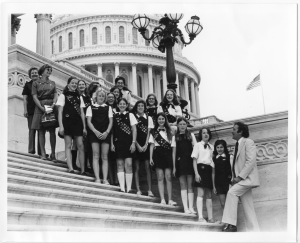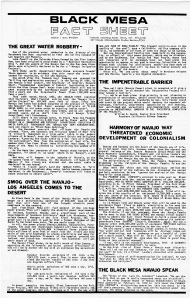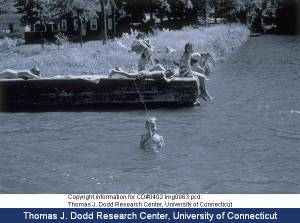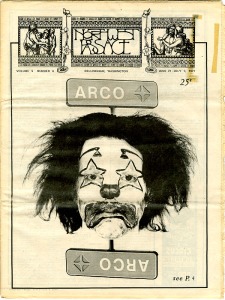Four months ago, the University of Connecticut “rose from 49th to 16th place” amongst greenest colleges in the Sierra Club’s Coolest Schools rankings (Kirk). This was encouraging news, especially to Office of Environmental Policy (OEP) director Rich Miller, who asserted that: “UConn’s score shows that our sustainability efforts cover a wide range of activities and engage many people” (qtd. in Kirk). Indeed, Miller’s Husky pride seems justified given the ever-expanding campus consciousness about environmental responsibility, largely due to the countless OEP initiatives since its founding in 2002.
The conservation efforts are apparent all over campus: a recycling station is located on each dormitory floor, recycling bins are placed throughout campus, sneaker recycling drives are held annually, and UConn even participates in the ever-popular Recyclemania competition. However, the progress that UConn has made in its efforts over the years begs the question—did past UConn students ever get the recycling itch?
Naturally, the answer to this question lies in the Dodd Center. According to the Undergraduate Student Government and President’s Office records, students in the Environmental Concern Committee helped implement an experimental glass recycling program during the fall 1972 semester. This program was launched in the Towers dorms and, after having recognized its initial success, was later expanded to other campus dorms. The glass-recycling program served as a model for students hoping to implement paper and aluminum-recycling programs as well.
Unfortunately by January 1974, the Inter-Area Residence Council Recycling Committee recognized that certain dorms in the glass recycling program were having problems with “not enough voluntary action and student cooperation” (IARC Minutes). The program continued in fall 1974, though with great difficulty as enthusiasm fell.
Fortunately, such spurts of recycling-related activism—which may be considered the early predecessors to the current array of UConn OEP / EcoHusky projects—will not be forgotten, as they are well-documented here at the Dodd Center.
Krisela Karaja, Student Intern
Resources:
Glass Recycling Folder, Box 1 (1972-1973), University of Connecticut Undergraduate Student Government Records. Archives and Special Collections at the Thomas J. Dodd Research Center, University of Connecticut Libraries.
The Inter-Area Residents’ Council Minutes, Jan. 17, 1974, Summer Recycling Workshop Folder, Box 9 (1974), University of Connecticut Undergraduate Student Government Records. Archives and Special Collections at the Thomas J. Dodd Research Center, University of Connecticut Libraries.
Kirk, Michael. “UConn Rises to 16th Among ‘Greenest Colleges.’ ” UConn Today. University of Connecticut Office of University Communications 25 Aug. 2011. Web. 18 Nov. 2011. <http://today.uconn.edu/blog/2011/08/uconn-rises-to-16th-among-greenest-colleges/>.
Recycling Committee Folder, Box 161 (1972), University of Connecticut President’s Office Records [Homer D. Babbidge, 1962-1972]. Archives and Special Collections at the Thomas J. Dodd Research Center, University of Connecticut Libraries.
Summer Recycling Workshop Folder, Box 9 (1974), University of Connecticut Undergraduate Student Government Records. Archives and Special Collections at the Thomas J. Dodd Research Center, University of Connecticut Libraries.







